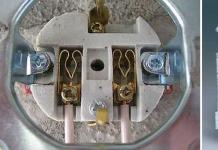We sowed or planted most of the plants in the spring and it seems that in the middle of summer we can already relax. But experienced gardeners know that July is the time for planting vegetables for a late harvest and the possibility of longer storage. This also applies to potatoes. Early summer potato crops are best used quickly, they are not suitable for long-term storage. But the second crop of potatoes is exactly what is needed for winter and spring consumption.
Astrakhan tomatoes ripen remarkably lying on the ground, but you should not repeat this experience in the Moscow region. Our tomatoes need support, support, a garter. My neighbors use all sorts of pegs, garters, loops, ready-made plant supports, and mesh fences. Each method of fixing the plant in an upright position has its own advantages and "side effects". I'll tell you how I place tomato bushes on trellises, and what comes of it.
Bulgur with pumpkin is a dish for every day, which is easy to prepare in half an hour. Bulgur is boiled separately, the cooking time depends on the size of the grains - whole and coarse grinding for about 20 minutes, fine grinding for just a few minutes, sometimes the cereal is simply poured with boiling water, like couscous. While the cereal is cooking, prepare the pumpkin in sour cream sauce, and then combine the ingredients. If you replace ghee with vegetable oil, and sour cream with soy cream, then it can be included in the lenten menu.
Flies are a sign of unsanitary conditions and carriers of infectious diseases that are dangerous for both humans and animals. People are constantly looking for ways to get rid of nasty insects. In this article, we will talk about the Zlobny TED brand, which specializes in fly protection products and knows a lot about them. The manufacturer has developed a specialized line of drugs to get rid of flying insects anywhere quickly, safely and without extra costs.
The summer months are the time for hydrangeas to bloom. This beautiful deciduous shrub is luxuriously fragrant with flowers from June to September. Florists willingly use large inflorescences for wedding decors and bouquets. To admire the beauty of a flowering hydrangea bush in your garden, you should take care of the proper conditions for it. Unfortunately, some hydrangeas do not bloom year after year, despite the care and efforts of gardeners. Why this happens, we will tell in the article.
Every summer resident knows that plants need nitrogen, phosphorus and potassium for full development. These are the three main macronutrients, the deficiency of which significantly affects the appearance and yield of plants, and in advanced cases can lead to their death. But at the same time, not everyone understands the importance of other macro- and microelements for plant health. And they are important not only in themselves, but also for the effective absorption of the same nitrogen, phosphorus and potassium.
Garden strawberries, or strawberries, as we used to call them, are one of the early fragrant berries that summer generously endows us with. How we rejoice in this harvest! In order for the "berry boom" to repeat every year, we need to take care of the care of the berry bushes in the summer (after the end of fruiting). The laying of flower buds, from which ovaries will form in spring, and berries in summer, begins approximately 30 days after the end of fruiting.
Spicy pickled watermelon is a savory snack for fatty meat. Watermelons and watermelon rinds have been pickled since time immemorial, but the process is laborious and time consuming. According to my recipe, it’s easy to cook pickled watermelon in 10 minutes, and a spicy snack will be ready by the evening. The watermelon marinated with spices and chili is stored in the refrigerator for several days. Be sure to keep the jar in the refrigerator, not only for the sake of preservation - chilled, this snack is just licking your fingers!
Among the variety of species and hybrids of philodendrons, there are many plants, both gigantic and compact. But not a single species competes in unpretentiousness with the main modest - blushing philodendron. True, his modesty does not concern the appearance of the plant. Reddening stems and cuttings, huge leaves, long shoots, forming, although very large, but also strikingly elegant silhouette, look very elegant. Philodendron blushing requires only one thing - at least minimal care.
Thick Chickpea Soup with Vegetables and Egg is an easy recipe for a hearty first course inspired by Oriental cuisine. Similar thick soups are prepared in India, Morocco, and the countries of Southeast Asia. The tone is set by spices and seasonings - garlic, chili, ginger and a bouquet of spicy spices, which can be assembled to your liking. It is better to fry vegetables and spices in melted butter (ghee) or mix olive oil and butter in a saucepan, this, of course, is not the same, but it tastes similar.
Plum - well, who does not know her ?! She is loved by many gardeners. And all because it has an impressive list of varieties, surprises with excellent harvests, pleases with its variety in terms of ripening and a huge choice of color, shape and taste of fruits. Yes, somewhere she feels better, somewhere worse, but almost no summer resident refuses to grow her on her plot. Today it can be found not only in the south, in the middle lane, but also in the Urals, in Siberia.
Many ornamental and fruit crops, except for drought-resistant ones, suffer from the scorching sun, and conifers in the winter-spring period - from the sun's rays, enhanced by the reflection from the snow. In this article we will talk about a unique preparation for protecting plants from sunburn and drought - Sunshet Agrosuccess. The problem is relevant for most regions of Russia. In February and early March, the sun's rays become more active, and the plants are not yet ready for new conditions.
“Each vegetable has its own time”, and each plant has its own optimal time for planting. Anyone who has experienced planting is well aware that the hot season for planting is spring and autumn. This is due to several factors: in spring, the plants have not yet started to grow rapidly, there is no sweltering heat, and precipitation often falls. However, no matter how hard we try, circumstances often develop in such a way that landings have to be carried out at the very height of summer.
Chili con carne in Spanish means chili with meat. This is a Texan and Mexican dish whose main ingredients are chili peppers and minced beef. In addition to the main products, there are onions, carrots, tomatoes, and beans. This red lentil chili recipe is delicious! The dish is fiery, burning, very satisfying and amazingly tasty! You can cook a large pot, arrange in containers and freeze - a whole week will be a delicious dinner.
Cucumber is one of the most beloved garden crops of our summer residents. However, not all and not always gardeners manage to get a really good harvest. And although growing cucumbers requires regular attention and care, there is a little secret that will significantly increase their yield. It's about pinching cucumbers. Why, how and when to pinch cucumbers, we will tell in the article. An important point in the cultivation of cucumbers is their formation, or type of growth.
Purslane (Portulaca) is a beautiful ornamental vegetable plant that grows throughout Eurasia. The birthplace of the flower is the tropics of the Eastern Hemisphere. As a weed, purslane can be found in North and South America, Central Europe and the Caucasus.
In Europe in the 17th century, this plant was grown in almost all gardens and was considered a vegetable crop. Then it spread to other countries and began to be cultivated as an ornamental flower.
The name Purslane (from the Latin gate, gate) reflects the method of opening a ripe seed box. In the people, a flower is called a rug, because of the growth of plants on the surface of the earth.
Purslane is an unpretentious plant that grows even in infertile soil. Purslane can be grown as an ornamental plant and eaten. Plants are grown in flower beds, alpine slides, lawns, borders, borders, pots, balcony boxes, vases, hanging baskets and containers.
The stems of the plant are fleshy. The length of the stems is from 10 centimeters to 2 meters (depending on the variety of the flower). The height of the bush is from 10 to 25 centimeters, some varieties can reach 40 centimeters. Leaves cone-shaped, needle-shaped. Foliage color is emerald to reddish.
Flowers can be simple, semi-double and double. The color is white, cream, orange, purple, yellow, red, lilac and pink. The buds are located at the ends of the stems. Blooms in sunny weather. Flowering lasts 1 day, then the bud fades. The flowering of the plant lasts from early summer to late autumn. Some varieties bloom around the clock.
After flowering, a box with seeds is formed. Seeds are shiny, silvery, diameter 0.6-0.9 millimeters. Each achene contains about 3000 seeds.
Types and varieties of purslane with a photo
The genus Portulac unites 200 species of annual and perennial succulents.
The most famous species are: large-flowered, terry, ampelous, garden.

Purslane large-flowered is popular with many flower growers. It is grown in flowerbeds, lawns, borders, near borders, in containers, pots, on balconies and as a houseplant. The flower is a creeping annual, when grown on a windowsill, it can grow for several years.
The height of the plant is not more than 20 centimeters. The length of the stems on average reaches 2 meters, in a warm climate after a few years it can grow up to 20 meters. The stems are juicy, light green in color, with a slight reddish tinge. The stems spread along the ground, filling it with a solid carpet.
The leaves are fleshy, alternate, small, cone-shaped, pointed, greenish-gray in color. The color of the leaves goes from green to reddish.
The flowers are simple, cup-shaped, about 4 centimeters in diameter, located at the end of the stems. The flower consists of 5 fused terry petals. Coloring can be: red, white, cream, pink, bright orange, yellow. Some varieties have light shades of other colors.

Terry purslane is an annual - a variety of large-flowered. It is grown in flower beds, on lawns, near borders, in containers. The plant grows on the ground, forms a continuous cover of flowers. Beautiful large flowers have multi-petal buds of various colors. The aroma is pleasant. The height of the bush is 15-20 centimeters. Stems creep along the ground.
Flowering lasts throughout daylight hours, then the buds close. There are several varieties that bloom around the clock, such as Sundance and Sanglo.
 Variety Sundance
Variety Sundance Ampel purslane refers to perennial hybrid plants. Stems creeping. The leaves are cone-shaped, elongated, fleshy, small. The flowers are double and simple, the colors are varied (white, red, yellow, pink, purple, lilac). In diameter 5-7 centimeters.

The flower is suitable for growing in flower beds, alpine slides, on lawns, in a multi-level flower bed, in a flower pot, hanging basket and at home on a windowsill and balcony.
The plant, when grown on the ground, spreads and forms a mat. When suspended, it forms a cascade of stems and flowers.

Purslane garden or dandur (medicinal, vegetable) can grow next to garden crops. The plant grows quite quickly. Used for medicinal purposes and as an additive in salads, marinades, soups, sauces.
Stems are fleshy. The leaves are flat, oval. The flowers are small, inconspicuous, yellow (1 cm in diameter). After flowering, an oval box with seeds is formed. The seeds are very small. The plant propagates by self-sowing.
The best varieties include:
The Splendens variety is distinguished by long flowering, a beautiful purple-pink shade of petals and a pleasant aroma. Inflorescences are terry, large.
The princely variety is distinguished by corrugated petals of inflorescences. The color is scarlet, orange or white.
The white-flowered variety has snow-white buds and emerald leaves. The stems are short (10 centimeters long).
Varieties Sundance and Sanglo bloom throughout the day and, unlike others, do not close at night.
Air marshmallow has short shoots up to 10 centimeters in length. Inflorescences are terry, large. The color range of colors is extensive.
The royal variety has simple, large flowers. The coloring is varied.
In addition to these varieties, one can distinguish: Scheherazade, Flamenco, Super Long Flower, Pun, Orange, Sunny Summer, Cherry, Merry Round Dance, Scarlet, Sunny Princess, Double Mix, Sonya.

Purslane is predominantly grown from seedlings. This heat-loving plant dies when the temperature drops to 10 degrees. Therefore, sowing in open ground is excluded in many regions.
You can sow seeds in open ground using shelter (greenhouse, greenhouse) or after warming up the soil. Sowing at home allows you to get early flowering and stronger plants.
For growing seedlings, low flower pots or containers with drainage holes are taken. Fine gravel or coarse river sand is poured at the bottom. The soil for sowing should be loose, airy and moisture permeable. Seedlings, subject to the rules of sowing, appear in 4-12 days. Closer to summer, seedlings are planted in the ground.

The best time for sowing purslane seeds is the end of February, March. In cool regions, sowing can be postponed to April, early May. Under favorable conditions, seedlings appear after 44 days, if the temperature for growing is from 20 degrees Celsius, the seedlings germinate within 2 weeks.
Soil and seed preparation
The soil can be any, but it should not contain organic matter and peat. Shop substrates in this case are not suitable, as they contain peat, which inhibits plant growth. Sand (30 percent), fine gravel (diameter up to 1.5 millimeters) and crushed charcoal are mixed into the ground.
The soil mixture is mixed and calcined in the oven for an hour.
Freshly harvested seeds are not suitable for sowing. Seeds must be aged for at least 6 months before sowing. Seeds for protection against fungal diseases are treated with a weak solution of potassium permanganate. Then they are dried on a napkin, mixed with calcined sand and sown.
For a more even distribution, seeds can be spread over the surface of the soil with a toothpick.

Sowing is done in moist soil. To moisten, you can take snow and distribute it over the surface, such moisture improves seed germination.
Seeds with sand are scattered on the soil surface from a paper envelope with a cut off corner or a sheet of paper.
When using a toothpick, the gap between the seeds should be about 1 centimeter. From above, slightly buried seeds are sprinkled with a thin layer of soil.
Crops are sprayed with water from a spray bottle.
The first shoots appear on the fifth day. These dates may vary depending on the sowing method, conditions and seed variety. The temperature for germination should be 35 degrees. At lower temperatures, seed germination deteriorates, the first shoots appear after 7-10 days. At temperatures below 20 degrees, seedlings often die or do not germinate at all.
To create the desired temperature, a microclimate is created in the seed pot. To do this, the container is covered with a transparent film, lid or glass.

- Plants need moderate watering. Before germination, the soil is sprayed from a spray bottle.
- After germination, watering is done in a pan or along the edges of the pot (warm, soft water). Excess water drains from the pan.
- The grown seedlings are watered under the roots, you can use a syringe without a needle. Watering should be done after the soil in the pot has dried out.
Plants love light and are grown in a well-lit window with additional lighting from a fluorescent lamp. Daylight hours should be at least 14 hours, supplementary lighting is carried out in the dark hours.
A month after the germination of seedlings, when 2 main leaves appear, the seedlings need to be picked out in separate pots. The sprouts are very fragile and transplantation must be done with extreme care.
2 weeks after planting, the first fertilizing with mineral fertilizers mixed with nitrogen is introduced.
After two weeks, re-fertilizing with mineral fertilizers containing phosphorus and potassium is carried out.
When the air warms up more than 15 degrees outside, the seedlings can be taken out for hardening. The time spent in the air should increase every day, from 15 minutes onwards.
Purslane: sowing and care - video

Purslane belongs to light-loving and heat-loving plants. It does not bloom in the shade. Low temperatures or a sharp temperature fluctuation leads to the death of the flower. The landing site should be bright, dry and warm.
Planting seedlings in open ground is carried out in settled weather and an air temperature of at least 15 degrees. Frost hazard must be excluded.
In the southern regions, plants are transplanted throughout May, in the middle lane from late May to mid-June. Planting in hanging baskets, containers and flowerpots is carried out in early May.
When the temperature drops, the plantings are covered with a film, and the hanging containers are placed indoors until the temperature indicators stabilize.
Purslane grows on almost any soil, but with heavy clay soil, river sand should be added to the soil.
Purslane is planted when it reaches 5 centimeters in height and at least 10 leaves appear on the stem. Plants with buds easily take root in a new place.
The best time to plant is early morning or evening.
The pits are prepared in advance, made in a checkerboard pattern. The gap between plants should be 10-30 centimeters (depending on the varietal characteristics of the purslane). The seedling is deepened to the cotyledon leaves.
The first week after planting, the plants need to be watered every day. Especially if the weather is dry. Then watering is done as needed.

Watering in hot weather gives strength to plants and enhances flower growth. Water should be settled, not cold. Water must be poured under the roots. Watering is carried out once a week.
There is no need to mulch the soil for this plant. The flower grows around and forms a continuous carpet that protects against moisture loss and weeds. Ornamental plants grow well without fertilization. Garden purslane for good growth is fertilized with a solution of ash with water (20 grams per 1 liter).
The main care is watering and prevention, the fight against a few diseases and pests that can damage the flower.
Before winter, the most beautiful flowers can be transplanted into pots, and in spring they can be propagated by cuttings. Plants in a pot can bloom all year round.

Purslane is resistant to many diseases and is little damaged by pests. But still there are diseases and pests that need to be dealt with and preventive work should be carried out to prevent damage by them.
High humidity leads to the defeat of fungal diseases.
The fungus Albugo portulaceae is manifested by characteristic spots on leaves and shoots. Shoots can be deformed. Damaged areas must be removed immediately, and healthy areas of the plant should be treated with copper-containing fungicides or Fundazol, Soligor, Previkur, Ridomil gold, Skor.
Green shoots during the growing season may be affected by aphids. Aphids suck juices from plants. In a short time, it can hit large areas of landings and lead to their death.
Aphids are easy to spot and get rid of. To combat the pest, a soap solution and insecticides are used: Karate, Decis, Biotlin, Ankara, Aktellik, Agravertin, Iskra.
When thrips appear, silver specks and stripes appear on the leaves. It is quite difficult to consider pests. In case of damage by pests, flowers are processed: Karbofos, Agravertin, Intavir or Phytoferm.

To collect seeds, it is necessary to remove wilted flowers that hide the fruits in time. Seeds are collected from August to September. The seed pods are torn off and kneaded over a saucer. They need to be dried and packaged in paper bags.
If the boxes are left on the bush, they open themselves over time and the plants self-sow. Most of the spring entrances without protection die from the cold. In order not to miss the opening of the boxes, you can carefully place a newspaper under the stems on the ground and collect the crumbled seeds without loss.
The germination of the collected seeds is maintained for 3 years.

The plant is added to salads, sauces, soups, homemade preparations, used for medicinal purposes and cosmetology.
When fresh leaves are used, all useful substances are completely preserved.
Greens are cut to form flowers. It excites appetite, quenches thirst. The taste is slightly spicy, with a slight sourness.
Heat treatment is detrimental to many trace elements.
The shoots and leaves of purslane contain a large number of useful substances: zinc, potassium, manganese, iron, copper, sodium, magnesium, calcium, sugars, proteins, as well as nicotinic, ascorbic and organic acids, resinous substances, carotene, tocopherol, phylloquinone, alkaloids, glycosides, norepinephrine.
Norepinephrine improves overall tone, stimulates the nervous system, enhances cardiac activity. Juice lowers blood sugar levels, increases blood pressure. The plant helps with insect bites, snakes and burns.
Purslane has anthelmintic, diuretic, antiemetic, antiscorbutic, sedative, anti-inflammatory effects. The plant is used for impotence, gonorrhea, various tumors, diseases of the liver and kidneys.
Garden purslane treats erysipelas, lichen, inflammation of the skin, helps to remove acne, blackheads and warts. The plant is used as a multivitamin component for lotions and masks.
Purslane garden: video
Purslane is a wonderful decoration of the garden, and when growing a garden species, it allows you to get a healthy vegetable crop with a pleasant taste.
The closer spring, the more you want warmth and bright colors. In the warm season, many colorful flowers open up in home gardens and gardens. But in order to please your eye with attractive plants, gardeners have to spend a lot of time and effort. So, many flowering crops grow well from seed - some require growing from seedlings, while others grow successfully when sown in open ground. One of the attractive garden plants is the large-flowered terry purslane, the cultivation from seeds of which we will discuss for the readers of "Popular about Health" in a little more detail.
Large-flowered purslane is a magnificent plant that is great for decorating the garden. This culture is planted in flower beds and flower beds, on discounts and dry slopes. On dry soil, such a plant is sometimes able to replace the lawn, in addition, it can also be placed in containers - outdoor vases, pots, hanging baskets, etc. 

All decorative purslane are representatives of the large-flowered purslane species. Purslane terry - this variety of such a plant is especially attractive. Purslane large-flowered is a perennial, but in our country, it is grown only as an annual, since it is not able to survive the winter in the open field. Such a culture belongs to creeping, succulents, its reddish branching stems are able to rise ten to twenty centimeters above the ground. The plant can open flowers only during the day and only in sunny weather.
Purslane flower - growing from seeds
If you live in the south in a warm area, large-flowered terry purslane can be sown directly into the soil. But in a cooler climate, you will have to resort to a seedling method of growing. To grow purslane from seeds, they are sown for seedlings in late winter and early spring. In this case, any soil can be used, it is only important that it be light, air and water permeable.
The seeds of the large-flowered terry purslane are extremely small in size. That is why, in order to make the landing as convenient as possible, it is worth mixing them with calcined or disinfected river sand by some other method. The resulting mixture is scattered over the surface of the moistened soil, and is not laid on top with earth, but only slightly pressed to the surface with a plank. Crops should be sprayed with water from a spray bottle.
Send the container with future seedlings to a fairly warm place - where the temperature does not fall below twenty degrees Celsius. Cover the crops with a film or bag to create greenhouse conditions for them to germinate. But do not forget to remove such a shelter once a day - for air to enter the seeds. Carefully monitor soil moisture, and as it dries, moderately moisten using a spray bottle. 

Somewhere in one to two weeks you will have the first shoots. At this stage of growing, you should remove the film cover from the boxes, and send the seedlings closer to sunlight - on the windowsill. Watering is also carried out using a spray bottle.
Seeds of large-flowered purslane are distinguished by good germination. Such a plant sprouts together, plump and juicy seedlings. After the second true leaf appears on the seedlings, carry out a pick. Plant the plants four centimeters apart, burying them in the soil down to the cotyledon leaves.
Further cultivation of purslane seedlings
Planting purslane in open ground is carried out after the threat of return frosts has disappeared. So, in the southern regions it is best to plant plants in the soil in May, in the middle lane - closer to the end of May-beginning of June, and in the Urals, as well as in Siberia - after the tenth of June. Shortly before planting, harden off the seedlings. For this purpose, containers with plants should be taken out into the fresh air during the daytime. Gradually, you need to increase the hardening time from fifteen minutes to five to six hours. It’s great if at the time of planting at least a dozen strengthened leaves and buds are visible on the plants.
Plant seedlings with an interval of fifteen to twenty centimeters between individual plants. Water the purslane immediately afterwards.
Do not forget to systematically weed and loosen the soil near the plants until the purslane shoots grow and cover the ground.
Where is it better to plant a large-flowered terry purslane in your garden?
Of course, in order for the plants to feel good in the garden and bloom beautifully, you need to choose the right place for planting them. So, large-flowered purslane grows well in an open, sunny area, as well as in a small penumbra. If the plant does not receive enough sun, then its color will be poor. Therefore, sufficient light is the main fundamental requirement for the successful cultivation of purslane.
Such a culture grows quite normally on poor sandy soil. You should not plant it on peat soil, as the good nutritional value of the soil stimulates the active growth of shoots and interferes with flowering. It is important that the purslane grows in a dry area, as stagnant water can cause it to rot. That is why you do not need to water the plant too abundantly. Humidification is carried out only in especially strong heat, when the soil dries out sufficiently. Since the purslane is a succulent, it can grow normally with prolonged overdrying.
"Flower rug" is a specific name that fully reflects all the decorative and botanical properties of the plant considered in this article.
Purslane flowers are widely used in the design of not only household plots and gardens, but also for decorating balconies, loggias, terraces and patios in the summer.
Rapid growth of vegetative green mass, resistance to trampling and magnificent double flowers in all shades of bud are the hallmarks of any crop description.
And it all started so prosaically. Many centuries ago, the culture penetrated the European continent from America, where it propagated by self-sowing and was a fairly stubborn weed.
In Europe, at first, purslane also multiplied on its own, until it attracted the attention of breeders.
The name portula was given after observing the behavior of the capsules inside which the seeds ripen. As they mature, they swing open like a gate, which actually means the Latin word portula.
Currently, two varieties are known: purslane flowers (double, large-flowered and ampelous) and vegetable purslane (used as a food crop and medicinal plant).
This article discusses the large-flowered and terry purslane, which is used for growing seedlings from seeds and decorating the landscape and interiors.
While looking at the photo of purslane flowers, they perfectly illustrate all the decorative properties of the plant:



Growing purslane flowers from seeds: planting and care (with photo)
Growing purslane flowers is best done in seedlings. Sowing seeds is usually timed to mid-March, when there is already a significant increase in daylight hours.
The culture is very demanding on the amount of light and ambient temperature. At a temperature of +10 degrees Celsius, the entire aerial part of the plant dies. Therefore, landing in open ground is possible only after the threat of return spring frosts has completely passed.
By this time, the night temperature should be at least 15 degrees Celsius.
For successful growth and development, a well-lit place with loose and structured soil is required.
Purslane grown from seeds in central Russia is planted no earlier than the first days of June. In the Urals and Siberia, the landing dates may be shifted to June 10-15.
It is advisable to grow in the form of a container culture, which allows, in case of a threat of frost, to clean the plants in a warm room.
If you sow purslane with seeds in a timely manner, growing the plant in the future is not difficult. Care consists in sufficient watering and fertilizing with mineral and organic substances.
Look at the photo of purslane flowers grown using seedlings sown in mid-March:



In order to get the same purslane, planting and care must be organized according to all the rules of agricultural technology for this crop. This is what we will talk about in more detail, since there are certain tricks.
The first subtlety is the preparation of nutrient soil. In no case should ordinary purchased land for flowers and seedlings be used for this purpose. It is based on peat, which inhibits the growth of purslane seedlings.
Moreover, this soil can negatively affect the germination of seeds. Therefore, the land should be taken care of in advance, in the fall.
Ordinary turfy soil or soil from under deciduous trees has the best composition. It is best to store harvested land in natural freezing conditions (for example, on an uncovered balcony).
Thus, you can easily get rid of more pests and diseases.
Before direct sowing, the earth is laid out in containers in which at least 2 cm of fine gravel or crushed eggshells are poured onto the bottom.
Then the soil is calcined in the oven for 1 hour. It is poured into containers with a layer of up to 5 cm. It is advisable to add about 1 part of calcined river sand to 4 parts of the prepared soil.
After compacting the soil in containers, it is important to properly moisten it. The best way is to put snow on top and wait for it to completely melt. This is the most natural type of moisture, which helps to increase the percentage of seed germination.
Planting of purslane is carried out on the surface of the soil, followed by deepening of the seeds to a depth of 5 mm. You can use a toothpick for this.


Then the container is abundantly sprayed with warm water from a spray bottle. From above it is covered with a transparent polyethylene film and placed on the windowsill, under which the central heating battery passes.
Germination of seeds requires 3 important factors: high temperature (not lower than 20 degrees Celsius), sufficient soil moisture and sunlight penetration.
When growing purslane from seeds, a mandatory picking is required in the phase of the appearance of two true leaves. For this procedure, peat pots are prepared in advance, which are filled with the same composition of the soil in which the sowing was carried out.
For one plant at this stage of development, a pot with a diameter of up to 8 cm is enough. Deepening during transplantation to cotyledon leaves.
Caring for purslane in the seedling stage may include a mandatory supplementary illumination procedure. An additional light source is needed when pulling seedlings and pale leaves. Usually 2-3 hours of evening supplementary lighting is enough in the evening hours.
After picking, after 2 weeks, the first top dressing is carried out with mineral flower fertilizers with a predominant predominance of nitrogen.
The second feeding should be carried out with mineral complexes, in which the percentage of potassium and phosphorus predominates.



Landing in the ground is carried out in mid-June. In containers and hanging planters, transplantation can be carried out in early May. But it is necessary to shelter the plants from exposure to cold air.
With the seedling method of growing, it is necessary to pay maximum attention to the procedure for hardening the seedlings.
2 weeks before planting in open ground, seedlings begin to gradually accustom to new growing conditions for it. To do this, the containers are taken out to fresh air on the first day for 15 minutes.
On the second day, the “walk” time increases to 30 minutes. During the week, the hardening time is brought to 5 hours.



In open ground, containers and planters, purslane flowers need an abundance of sunlight, daily watering with warm water and mineral fertilizers once a week throughout the entire flowering period. And, by the way, under favorable conditions, it can easily continue until the end of August in central Russia.
In the south, this period is even longer. The fact is that when some buds fade, more and more new flowers form in the purslane.
The purslane flower is terry and large-flowered: “white-flowered” or “splendens”?
The large-flowered purslane flower is known to biologists under the Latin name Portulaca grandiflora - this is the most common species.
In total, more than 200 varieties are represented, among which it is worth paying attention to "white-flowered" and "splendens", they have elegant terry inflorescences of rich white and pink color.
But let's try to understand all this in more detail. All varieties of purslane are accompanied by colorful photos, which show all the decorative attractiveness of the plant.



Large-flowered purslane is a flower that richly decorates flower beds and flower beds of most modern European countries with a warm climate.
It is a perennial plant that has an impressive mass of creeping shoots up to 1.5 meters long. They are resistant to physical impact, but it is still not recommended to plant them on lawns and garden paths.
The buds are similar to the heads of a tea rose, they have a wide variety of colors. A mixture of different colors looks great, planted as a border plant or in a garden container.



Terry purslane is a rarity that can decorate even the most sophisticated garden. Splendens variety has a pure pink shade of petals, a long flowering period and an unusual pleasant aroma.
But the “white-flowered” purslane differs from it in the exquisite purity of snow-white buds, favorably emphasized by the emerald rich greenery of the plant.


Ampel purslane at home
This plant is perennial and perfect for indoor cultivation. Moreover, spring cuttings are possible in order to obtain early flowering on young flowers.
Ampel purslane is not some special variety or variety. In fact, any species is ampelous or cascading if it grows in hanging planters.
In open ground, the stems usually spread along the surface of the earth, forming a kind of green mat.
And at home, it is advisable to keep purslane in hanging pots on a sunny southern window.
In winter, regular watering is provided. Top dressing is stopped from October and resumed only at the beginning of March.
After 2 weeks, cuttings are cut, which are easily rooted in ordinary water. From such seedlings, after a month, beautiful flowering bushes are formed.


It is very simple to start a purslane at home - at the end of August, you can transplant it from open ground or bring garden containers into the house.
Plant purslane (lat. Portulaca), or dandur- a species of the genus Purslane of the Purslane family, growing in the tropical regions of the Northern Hemisphere and numbering, according to various sources, from one hundred to two hundred varieties. The purslane flower prefers wet sandy places along the banks of rivers and reservoirs, it grows in gardens, fields and vegetable gardens near housing. The name of the plant comes from the Latin word "portula", which means "small gate, gate" - the seed box of the plant opens, as if small doors swing open. We call this plant "rugs".
The popularity of purslane in Europe came in the Middle Ages, the British especially liked it, and at first not as a garden plant, but as a garden plant. In horticultural culture, only one species is grown - large-flowered purslane (Portulaca grandiflora).
Listen to article
Read more about growing purslane below.
Purslane flowers - description
Purslane flowers are grown as annuals because they cannot stand our winters even under cover. Their height does not exceed 30 cm. Purslane has a branched spindle-shaped root, juicy, branched brown stems, hollow inside, fleshy leaves, cylindrical or resembling a flattened egg. The flowers are white, yellow, deep red, bloom from June to September, and although each flower lives only one day, withering by evening, purslane blooms so profusely that it seems continuous. The fruit of the purslane is a multi-seeded spherical box.
In addition to garden purslane grown in flowerbeds, in pots, hanging baskets and containers, garden purslane grass grows in our gardens, or vegetable purslane, which is a weed on the one hand, and a salad and medicinal plant on the other.
Growing purslane from seeds
sowing purslane
Many flower growers consider growing purslane seedlings the most convenient way to propagate, so we will tell you how to sow purslane seedlings. Despite the fact that many flower growers, when discussing when it is better to plant purslane seeds, believe that this should be done at the end of February or at the beginning of March, it seems to me that it is better to sow purslane for seedlings in April so that the germinated seedlings have enough daylight for growth and development, while earlier crops have to be supplemented artificially.
Before sowing purslane, you should prepare a soil mixture, since any purchased soil contains peat, which slows down the germination of purslane seeds. To prepare the mixture, you can take garden soil, add about 20% sand to it, mix thoroughly and ignite the mixture in the oven. Place a layer of fine gravel or expanded clay in a shallow container with drainage holes, place disinfected soil on top, pour it with settled, and best of all, melt water and spread the seeds a centimeter apart on the surface - the easiest way to do this is using a wet toothpick - then lightly press the seeds into the soil and, having built a frame over the container, pull transparent polyethylene over it to make a greenhouse. It is necessary to keep a greenhouse with sowing in a bright, warm place where the temperature will not fall below 22 ºC, but it is better that it be approximately 30 ºC.

Purslane seedlings
Under favorable conditions, purslane seedlings will begin to appear in a week or two, and as soon as this happens, the film can be removed from the container. Now you should know how to grow purslane seedlings. Growing purslane seedlings involves periodically moistening the soil with settled water, using the bottom irrigation method, and, if necessary, organizing additional lighting. Under what circumstances might this need arise?
If you see that the seedlings are too stretched, it means that they do not have enough light, therefore, they will have to be illuminated with fluorescent lamps or an ordinary table lamp for a couple of hours in the morning and a few hours in the evening, thus lengthening daylight hours for seedlings. In cloudy weather, the lamps should burn all day. But if you sow purslane for seedlings in April and keep the seedlings on the southern windowsill, then all this trouble with artificial lighting will not be needed.
Purslane pick
When and how to dive purslane? As soon as the seedlings have a couple of true leaves, they need to be planted three by three in cups with a diameter of 7-8 cm, trying not to shake off the earthen ball from the roots, and a week after picking, when they take root, the first top dressing should be applied with complex mineral fertilizer. Then top dressing should be carried out weekly or once a decade until the very landing in the ground.

Planting purslane in open ground
When to plant purslane
Planting purslane flowers is carried out no earlier than the beginning of June, because you must be sure that there will be no more frosts, otherwise, at temperatures below 10 ºC, the leaves fall off the purslane. Prepare a place for the plant in the sunniest and most elevated area, because even in partial shade it may not bloom, and if the purslane roots are near groundwater or in a lowland where water stagnates, putrefactive processes of the plant's root system may occur
The soil for purslane is best poor, sandy, because on rich soil purslane only increases its green mass, but does not bloom.

How to plant purslane
It is desirable to plant purslane in open ground when the seedlings grow 10-15 leaves and several buds appear. Purslane is planted in this order: the bushes should be located no closer than 15-20 cm from each other. The first 2-3 days after planting, the purslane in the flower bed should be watered daily, especially if the weather is dry. Purslane blooms from seeds 6-7 weeks after germination.

Purslane Care
How to grow purslane
Caring for purslane flowers consists in periodic watering - despite the fact that its leaves retain moisture well, the plant needs water for normal flowering. The plant does not need fertilizing, pruning, weeding, or loosening the soil. All purslane care is infrequent, but regular watering.
Pests and diseases of purslane
As you can see, planting a purslane and caring for it is within the power of a lazy flower lover. Even growing terry purslane from seeds is not difficult, because it does not differ from the rules for growing large-flowered or garden purslane, which were described above. As for pests and diseases, the purslane is very resistant to them, and you are unlikely to have any difficulties with this.
However, sometimes there is a massive raid on flower beds, gardens and aphids, then the purslane also gets it. It is best to fight aphids by spraying Actellik, and if you couldn’t fix the problem the first time, then after a week you can repeat the insecticide treatment. Sometimes purslane infects the fungus Albugo portulaceae, which is expressed in deformation of the shoots and the appearance of spots on the leaves. Damaged parts will have to be removed and the plants sprayed with a fungicide containing copper.

Purslane Properties
Purslane has been known as a medicinal plant since the time of Hippocrates and Galen. Then it was believed that its seeds cleanse the body, and the leaves are an antidote for snake bites. Purslane leaf gruel removed swelling from the eyes, taking it inside with wine, treated a sick stomach and relieved pain in the bladder. Arab healers, using crushed purslane leaves mixed with wine, removed warts, relieved erysipelas and treated acne.

Purslane after flowering
How and when to collect purslane seeds
As soon as the flowers begin to wither, remove them without regret, while they are easily removed from the ovary, otherwise they will wither, and you will not see the fruit under them, which, when ripe, will open and spill the seeds to the ground. In dry weather, the seeds ripen two weeks after pollination; in cold summer and autumn, the ripening process can be delayed for a month. In addition, you should know that freshly harvested seeds become viable only next spring and retain it for three years.

Purslane in winter
In our climate, garden purslane does not hibernate, so in the fall you need to free the area from it and dig up the soil. Purslane propagates by self-sowing, so do not worry about how and when to plant it next spring.


















